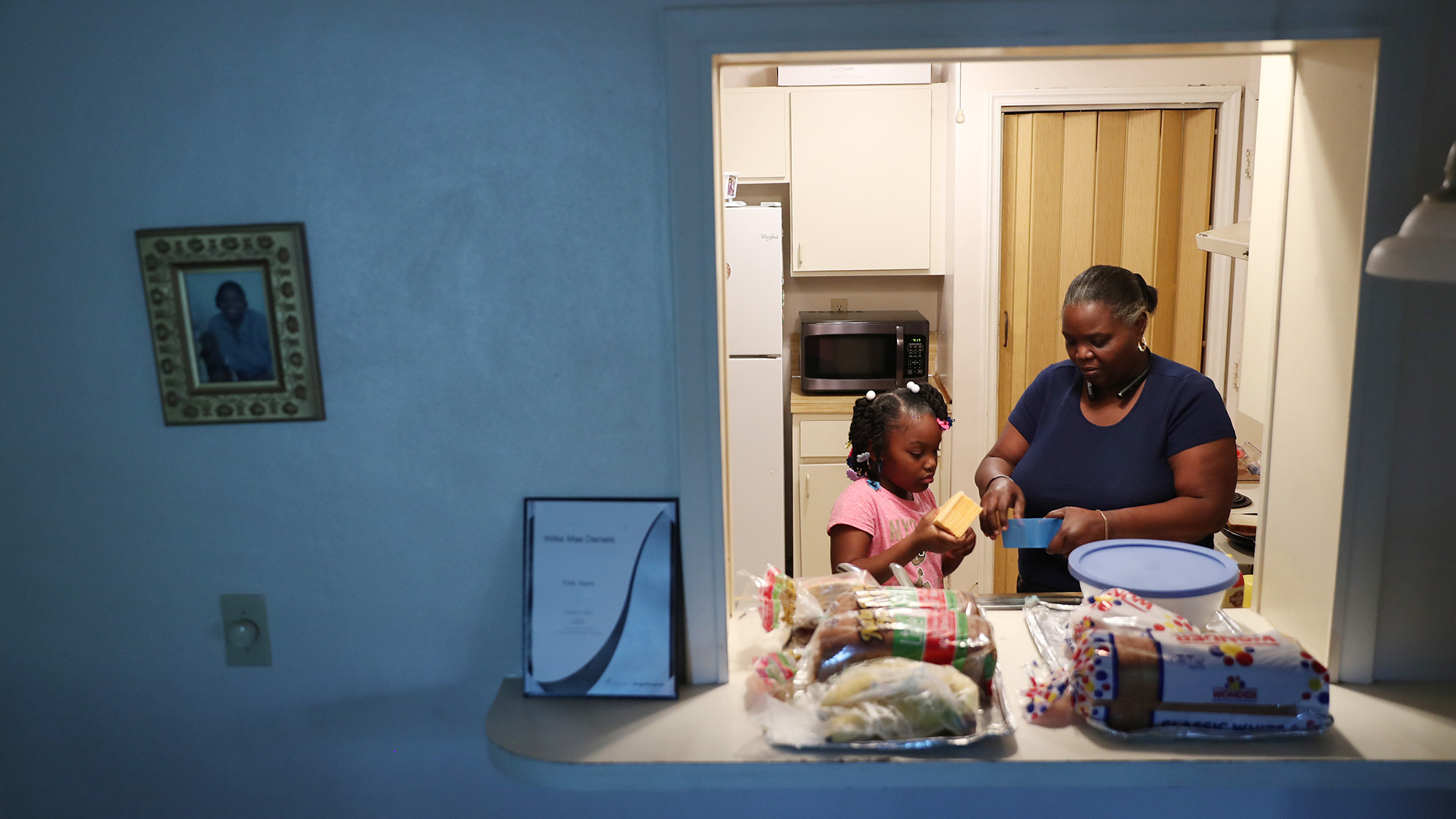Black households face greater financial devastation due to COVID-19 shutdowns

Credit: Denisismagilov / Adobe Stock
- A paper by a team of Princeton researchers highlights devastating socioeconomic inequalities between racial groups worsened by the pandemic shutdowns.
- By the middle of June, the rates of new debt were similar for Black and Latinx households at more than 80%, while about 70% of white households reported new debt.
- When the pandemic ends, tens of millions of households will still find themselves stuck in a devastating financial hole, and a disproportionate amount of those will be Black and Latinx households.
Researchers from the Princeton School of Public and International Affairs are reporting that low-income Black households are facing greater economic precarity and vulnerability as a result of the COVID-19 pandemic as compared to white or Latinx low-income households.
Understanding the Economic Shock of the Covid-19 Crisiswww.youtube.com
We’ve known that COVID-19 has been disproportionately fatal to Black Americans as compared to white, non-Latinx Americans, and that these deaths (as well as hospitalizations) have shone a nasty light on racial disparities undergirding the U.S. healthcare system. But now a team of researchers from the Princeton School of Public and International Affairs are highlighting devastating socioeconomic inequalities exacerbated by the pandemic. Their report details how low-income Black households experienced higher rates of job loss, greater uncertainty accessing food and medical resources, and higher rates of debt than white or Latinx low-income households.
The paper, published in the journal Socius, is the first of its kind offering systemic, comprehensive, and descriptive estimates of the impacts of COVID-19 crisis on low-income Americans from March 2020 to mid-June. The authors’ findings spotlight a snowballing crisis in which a growing number of families with low-income reported financial insecurity, then took on more debt to manage their expenses for resources.
The authors aimed to determine the economic impacts of the pandemic on lower income Americans, and spotlight racial disparities within that socioeconomic group. They analyzed factors a family needs to satisfy basic survival needs including job loss, housing instability, and insecurity around food and medical resources.
“Media coverage has focused on the racially disparate effects of Covid-19 as a disease, but we were interested in the socioeconomic effects of the virus, and whether it tracked a similar pattern,” said study co-author Adam Goldstein, assistant professor of sociology and public affairs at Princeton’s School of Public and International Affairs in a Princeton University press release.
Goldstein noted that it was clear that Black households in America were disproportionately affected amongst low-income households who struggled at the beginning of the pandemic.
“Even among low-income populations, there is a marked racial disparity in people’s vulnerability to this crisis,” said study co-author Diana Enriquez, a doctoral candidate in Princeton’s Department of Sociology.
For the study, the researchers used data that came from two different tracking surveys. The primary data source was a bimonthly survey series of Supplemental Nutritional Assistance Program (SNAP) recipients. The respondents were recruited through the mobile app, FreshEBT, for managing SNAP benefits. Also used was the U.S. Census Bureau’s publicly available Household Pulse Survey, which is drawn from representative household samples rather than solely from program recipients. Using these sources, the authors surveyed people who were using the SNAP and Temporary Assistance for Needy Families (TANF) benefits prior to the COVID-19 crisis. Several waves of surveys were sent out between the end of March and mid-June, a window of time when Americans were starting to feel the first economic hits of the shutdowns, but before their economic status had been transformed in a major way.
Participants were asked about their present and perceived situation related to employment status, housing status, ability to access food and medical resources, and amount of debt. For instance, survey respondents were asked if they currently had stable housing and also if they believed their housing status would be stable after that 30-day period.
The authors found that lower-income Americans who were already receiving government assistance had experienced major impacts in all areas except for housing status. Here were the major findings from each survey wave between the end of April and mid-June:
- Nearly 35 percent of all survey respondents reported losing their jobs by mid-June.
- 67 percent said that they missed paying at least one bill at the beginning of the shutdown.
- 77 percent of households reported missing a bill or payment on their rent.
- 54 percent of individuals said they had skipped meals, were dependent on friends and family for food, or had visited a food pantry due to the shutdown, despite being covered by SNAP. (This figure rose to 64 percent by the end of the month of June.)
But when the researchers looked at the data in race categories, it was clear that, on average, low-income Black households had taken much greater hits than low-income white households had. The magnitude of racial differences varied across indicators and data sources, but Black respondents fared consistently worse than non-Hispanic whites in both survey data sets, and Latinx respondents fared worse than whites in the Household Pulse Survey.
Here were the major findings when evaluated on race:
- At the start of April 2020, 30 percent of Black households reported a job loss. By the end of the month that number rose to 48 percent.
- 80 percent of Black households surveyed reported taking on greater debt to cover their bills by the end of April 2020.
- By the middle of June, the rates of new debt were similar for Black and Latinx households at more than 80 percent, while about 70 percent of white households reported new debt.
These survey results have put a magnifying glass on how badly the COVID-19 pandemic has impacted vulnerable households who were already living near the poverty line.
“Research shows that these types of debts and unpaid bills — even small ones — can compound over time and trap low-income households in a cycle of financial distress,” Goldstein said. And when the survey results are analyzed for differences amongst racial groups, it’s clear that those most vulnerable to this snowballing financial devastation are Black and Latnix households.
Ultimately, this research shines a light on a disturbing truth emphasized by Goldstein: “Even in a miraculous scenario where the pandemic ends in a few months and low-wage workers are rehired, tens of millions of households will still find themselves stuck in a financial hole without additional infusions of economic relief.”





